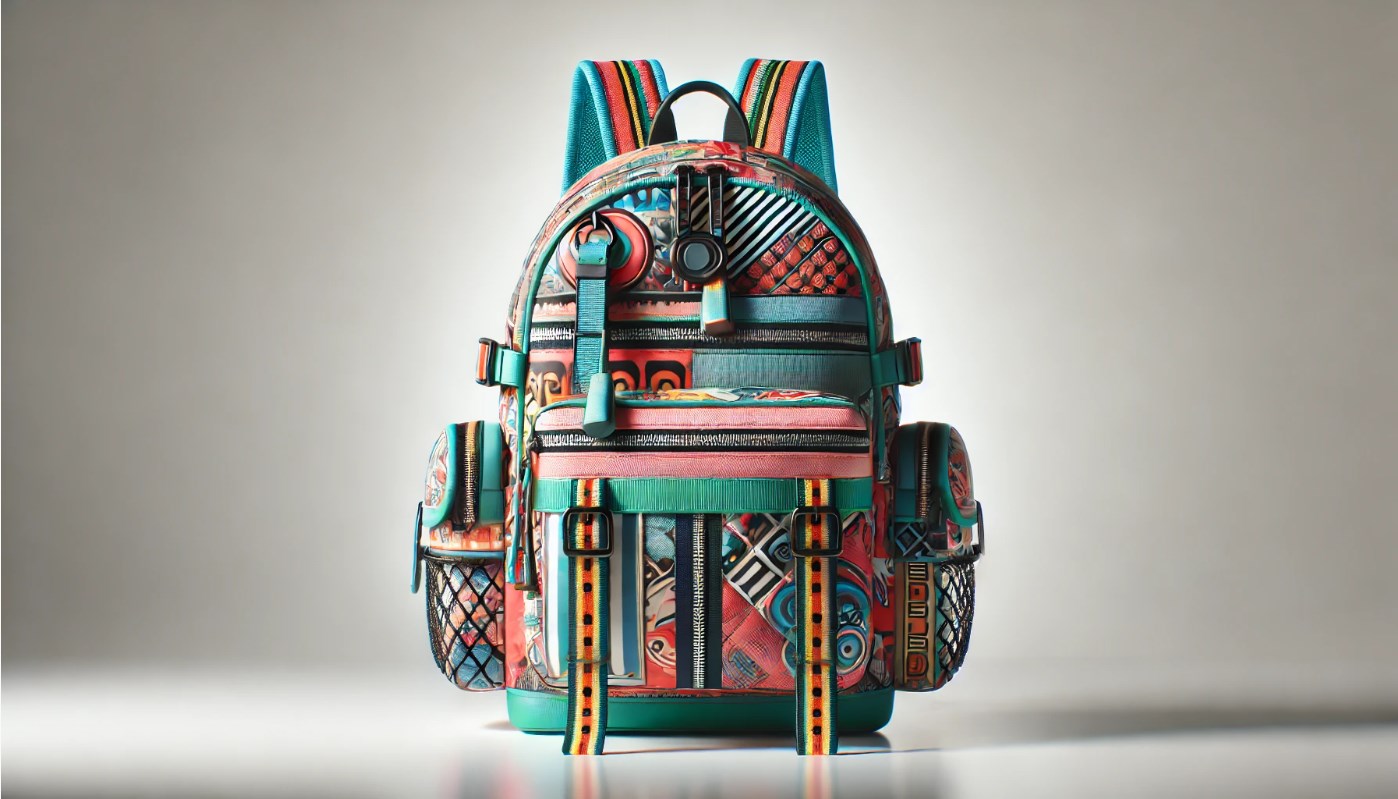Creating compelling product listings is a vital component of any backpack brand’s online presence. Whether you are selling on your own website, e-commerce platforms like Amazon, or a marketplace like Etsy, a well-crafted product listing can make all the difference in converting visitors into customers. In a competitive market, a generic, poorly written product description or an unclear image may result in lost sales. On the other hand, a carefully designed listing that clearly communicates the value of your backpack can significantly boost your brand’s visibility and sales.
Why Product Listings Matter
The product listing is often the first interaction a customer has with your backpack brand. It serves as a crucial touchpoint that not only informs customers about the product’s features and benefits but also convinces them that it’s the right choice for their needs. An engaging, well-optimized product listing can:
- Attract Attention: High-quality images and persuasive descriptions help grab the attention of potential customers browsing through dozens or even hundreds of listings.
- Communicate Product Value: A compelling product listing clearly demonstrates the value of the backpack and why it stands out from competitors.
- Drive Conversions: When a product listing is informative, clear, and persuasive, it increases the likelihood that a shopper will make a purchase.
Key Components of a Product Listing
An effective backpack product listing combines several key elements: an engaging title, detailed product description, high-quality images, product specifications, and customer reviews. Let’s dive deeper into each of these elements and explore how to optimize them for maximum impact.
Crafting the Perfect Title for Your Backpack Listing
The Importance of a Clear, Descriptive Title
The title of your product listing is the first thing customers will see, and it plays a significant role in both attracting attention and ranking in search engine results. A well-crafted title should clearly describe the backpack, include relevant keywords, and be concise yet informative.
Key Features of an Effective Product Title:
- Brand Name: Including the brand name in the title can help build brand recognition and trust.
- Product Type: Clearly state that the product is a backpack.
- Primary Features: Highlight key attributes that differentiate the backpack (e.g., waterproof, eco-friendly, ergonomic).
- Target Audience or Use Case: Indicate the intended user or specific use case, such as “backpack for hiking,” “laptop backpack,” or “school backpack.”
- Size or Capacity: If relevant, include information about the size or capacity, such as “15-inch laptop compartment” or “20L capacity.”
- Avoid Over-Stuffing Keywords: While it’s essential to include important keywords for SEO, avoid keyword stuffing, which can make the title sound unnatural.
Example Title Structure
Brand Name + Backpack Type + Target Audience/Use Case + Key Features + Size/Capacity
- Example: “Lynsow Waterproof Hiking Backpack with 30L Capacity for Men & Women”
- Example: “Lynsow School Backpack with Laptop Compartment and Adjustable Straps”
Writing a Persuasive Product Description
The Role of Product Descriptions
A compelling product description serves as the primary method of communicating the features, benefits, and value of your backpack to potential buyers. It’s an opportunity to make a case for why customers should choose your backpack over others.
Tips for Writing Persuasive Product Descriptions:
- Start with a Hook: The opening sentence should immediately grab attention and convey the backpack’s most exciting or unique feature.
- Example: “Experience the ultimate in comfort and style with the Lynsow Hiking Backpack—designed for adventurers who demand durability and functionality.”
- Highlight Key Features and Benefits: Focus on what makes the backpack special. Break down the features (e.g., water-resistant material, padded straps) and explain how they benefit the customer (e.g., “keeps your belongings dry in rainy conditions”).
- Example: “Equipped with a spacious 30L main compartment and multiple pockets, this backpack offers ample storage for all your gear, while the adjustable padded straps ensure comfort during long treks.”
- Create Visual Imagery: Help potential customers visualize themselves using the backpack by describing its features in a way that appeals to their needs and desires.
- Example: “Whether you’re hiking up a rugged mountain trail or navigating the urban jungle, this backpack’s ergonomic design and lightweight fabric will keep you moving with ease.”
- Focus on the Customer’s Needs: Speak directly to the needs of your target audience. For example, if you’re marketing to students, highlight features like organizational compartments, comfort, and durability.
- Example: “Ideal for students, this backpack features a padded laptop sleeve, spacious compartments for books, and a built-in USB charging port for convenience on the go.”
- Incorporate Keywords for SEO: Including relevant keywords in your product description helps improve its visibility in search engine results. Use terms that potential customers might use when searching for backpacks online.
- Keep it Concise but Informative: While details are important, avoid overwhelming customers with long-winded descriptions. Aim for clarity and conciseness without sacrificing essential information.
Structuring Your Product Description
A well-structured description is easier to read and understand. Consider using the following structure:
- Introduction: A brief, compelling statement about the backpack’s purpose or unique feature.
- Key Features and Benefits: A bullet-point list or paragraph detailing the backpack’s specifications, functionality, and advantages.
- Use Cases and Target Audience: Describe who will benefit from the backpack (e.g., students, travelers, professionals).
- Call to Action: Encourage customers to take action, such as “Order today and experience the ultimate comfort and durability.”
Optimizing Images for Your Backpack Listing
The Power of Visual Appeal
Product images play a pivotal role in a customer’s decision-making process. High-quality images showcase the backpack’s design, functionality, and features, allowing potential buyers to get a clear picture of what they are purchasing.
Key Tips for Optimizing Product Images:
- High-Quality, Professional Photos: Invest in high-resolution, professional-grade images that showcase your backpack from multiple angles. Make sure the images are well-lit and feature the product in real-life scenarios (e.g., on a hiking trail, in a classroom, or on a commuter train).
- Multiple Angles and Close-Ups: Provide a variety of images to show the backpack from different perspectives. Close-ups of key features such as zippers, compartments, and straps can help customers assess the quality and functionality of the backpack.
- Lifestyle Shots: Include images that show the backpack being used in context. Lifestyle shots that show a person using the backpack in a relevant setting (e.g., traveling, working, studying) make the product feel more tangible and relatable.
- Zoom Functionality: Allow customers to zoom in on images to see finer details, such as stitching, fabric texture, or interior compartments. This level of detail reassures buyers that they are making an informed purchase.
- Consistency Across Images: Ensure all images are consistent in terms of background, lighting, and style. This helps maintain a professional and cohesive look throughout your product listing.
Including Size and Fit Information
If your backpack comes in various sizes or you want to highlight specific dimensions, include a size guide and measurements in the images or the product description. For instance, a diagram that shows the bag’s dimensions or how much it can carry (e.g., laptop compartment size, main compartment capacity) can help customers choose the right product.
Using Customer Reviews and Social Proof
The Power of Customer Testimonials
One of the most effective ways to build trust and credibility for your backpack brand is through customer reviews. Positive feedback and testimonials can greatly influence purchasing decisions, as customers often look for social proof to confirm the quality and reliability of a product.
Strategies for Leveraging Customer Reviews:
- Encourage Reviews: After a purchase, encourage customers to leave reviews on your product page. You can incentivize this by offering discounts or entering them into a giveaway.
- Display Reviews Prominently: Make sure reviews are easy to find. Place them near the product description or at the bottom of the page so that potential customers can quickly see what others think about the backpack.
- Respond to Feedback: Engaging with customers, whether they leave positive or negative reviews, demonstrates your commitment to quality and customer service.
- Showcase User-Generated Content (UGC): Encourage customers to share photos or videos of themselves using the backpack. Featuring UGC in your product listings adds authenticity and allows potential buyers to see how the backpack looks in real-life settings.
Using Ratings and Q&A Sections
Many platforms allow you to display average ratings and have a dedicated section for customer questions and answers. This provides transparency and helps answer potential customers’ questions, improving their shopping experience.
Example:
- Customer Rating: “4.7 out of 5 stars (150 reviews)”
- Questions and Answers: “Q: Is this backpack suitable for carrying a laptop? A: Yes, it has a dedicated 15-inch laptop compartment!”
Pricing, Discounts, and Offers
The Role of Price in Decision-Making
Price is a major consideration for customers, especially in competitive markets like backpacks. It’s important to set a price that reflects the quality of your product while remaining competitive with similar options.
Pricing Tips:
- Competitive Pricing: Research your competitors to understand what similar backpacks are priced at, and make sure your price is in line with the value you offer.
- Highlight Discounts or Offers: If you offer a discount, sale, or special promotion, make sure it is clearly visible in the product listing. A limited-time offer can create a sense of urgency.
- Transparent Pricing: Be upfront about shipping costs, taxes, and any additional fees so customers know the total cost upfront.
By following the strategies outlined in this guide, you can create product listings that are not only visually appealing but also informative and persuasive. With compelling descriptions, high-quality images, and the right mix of social proof and pricing strategies, your backpack listings can attract more buyers, boost conversions, and enhance your brand’s online presence.







